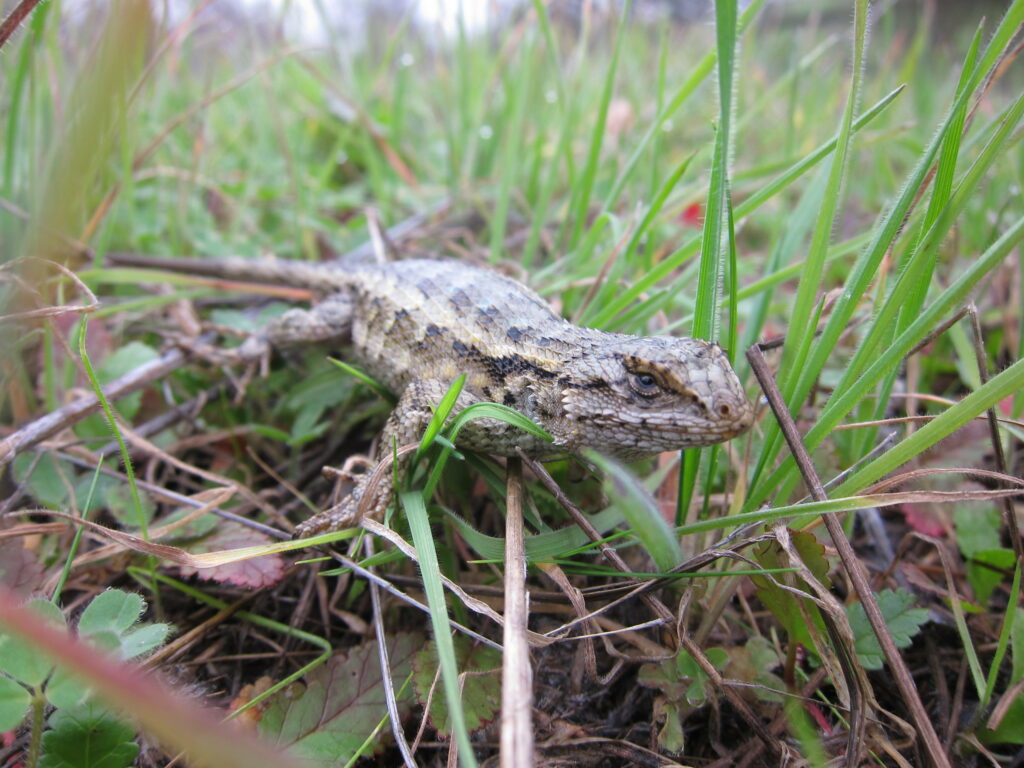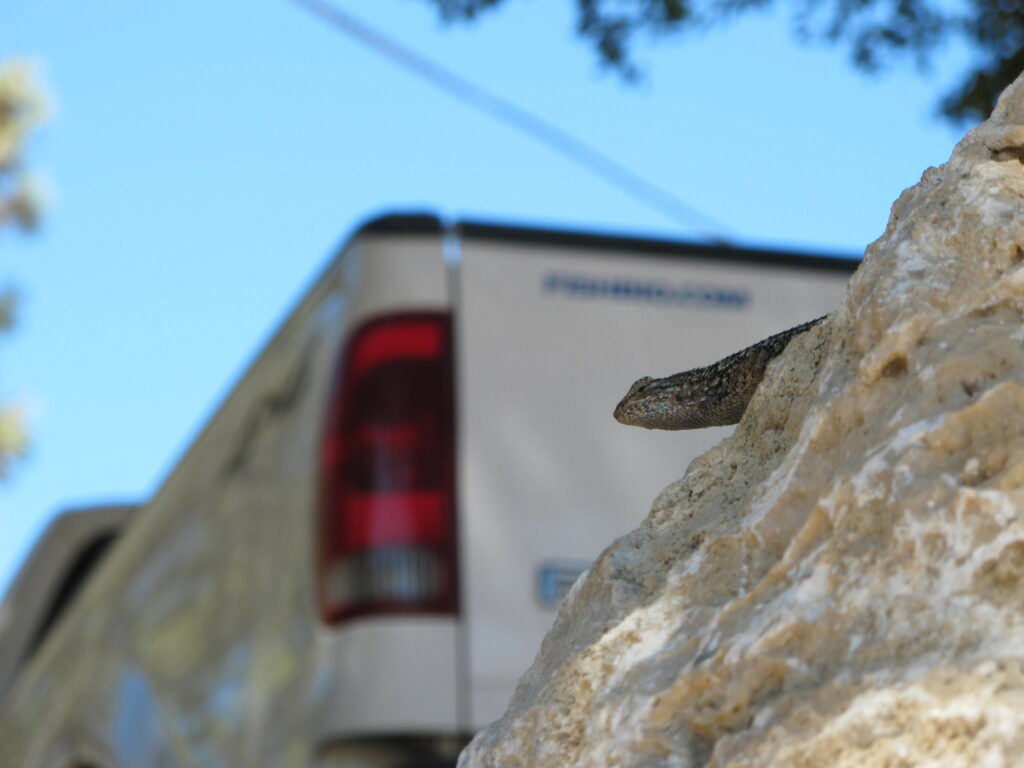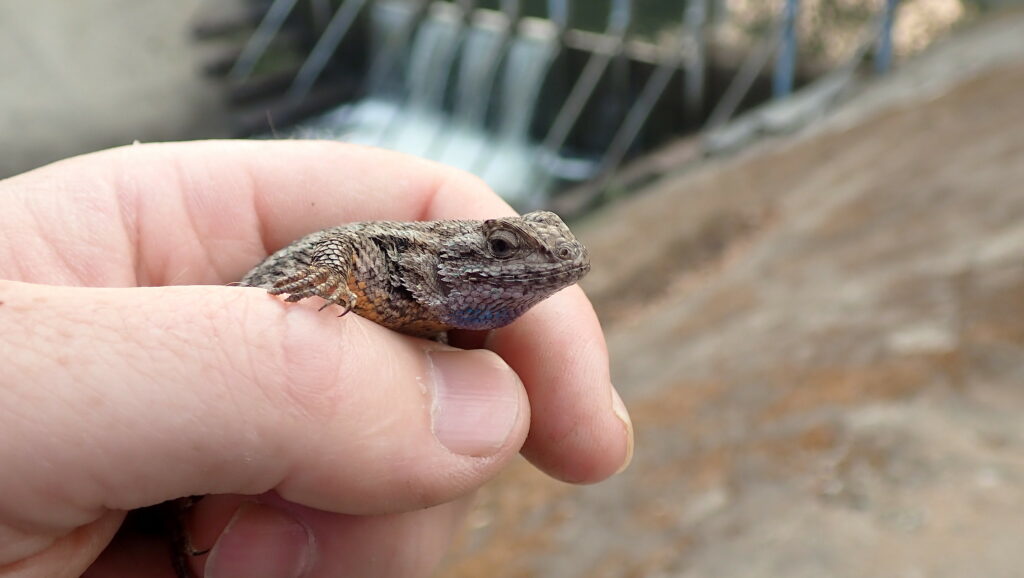Wednesday March 30, 2022

Along the riverbank lie scattered piles of stacked rocks and debris, warm from baking in the bright sunlight. These provide ideal basking spots for lizards and other types of reptiles to absorb the radiating heat from dark rocks. When they spot predators nearby, lizards use the rocks as refuge, dipping and hiding away within the stacks. While performing our daily fisheries monitoring duties at our field sites, we commonly stumble across Western fence lizards (Sceloporus occidentalis) of many shapes and sizes sunning themselves. Beyond the rural setting of our field sites, Western fence lizards can also be found in urban habitats, including large cities like Los Angeles, where researchers have studied their biology and ecological adaptations that allow them to survive in a variety of environments.

Urbanization, or the change from a rural environment to a large city or human development, is a major threat to wildlife. As our human world continues to expand, the natural world continues to shrink, leaving less habitat available for other species. The ability to adapt and survive in these urbanizing habitats has contributed to the success of Western fence lizards. Researchers from Los Angeles found that these lizards are able to shift not only their habitat use, but also their body form to cope with city life. In urban environments, fence lizards were found to have shorter limbs and toe lengths compared to those in rural habitats. This may be because lizards in urban environments are mostly ground-dwelling and often navigate flat concrete surfaces, unlike rural lizards that may have to climb, jump, and scurry up different types of woody debris and trees.

The researchers also noticed that the urban lizards experienced warmer climates year-round compared to lizards residing in rural areas. This is known as the “Urban Heat Island Effect,” a phenomenon in which urban areas generally experience warmer temperatures than rural ones, due in part to the lack of natural tree coverage. Cities have an abundance of concrete structures that absorb and reemit heat, and also have fewer trees than rural areas to help cool and reduce that heat. The researchers found that urban residing fence lizards have fewer and larger scales on average compared to those found in rural areas, which helps them adapt with increased temperatures of urban life. The lizards are able to retain more moisture since there is less skin exposed in between their larger scales, which helps decrease the rate of evaporative water loss for these urban lizards. These special adaptations help give the Western fence lizard a leg up in an ever urbanizing world.
